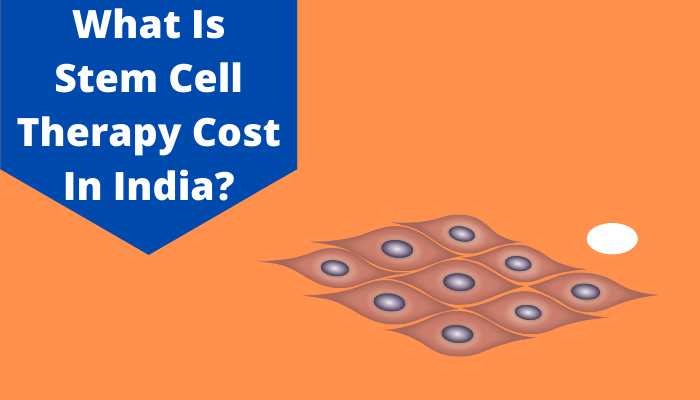Why Should You Expand Your Mediclaim with a Top-up Policy?
What do you do when you want to make a phone call but have run out of balance? You opt for a top-up plan.
Similarly, if you wish to file a claim but your sum insured has exhausted, you expand your mediclaim with a top-up policy. The alternative is that you pay the expenses from your pocket.
Some features of top-up plans include:
- Adaptability
- Free look-up period
- Lifelong renewability
- Pre-medical tests
- Tax exemption
Here are the top reasons why you should expand your mediclaim with a top-up policy:
- Medical Inflation
- Higher coverage
- No sub-limits
- Cheaper
What is top-up insurance?
A top-up plan is an insurance policy that provides additional coverage to you in case you have exhausted the sum insured on your health insurance plan. The insurer will cover the expenses only if the deductible amount of the top-up plan has been surpassed. A top-up insurance plan can be equal to a lifesaver in emergencies as it provides the necessary coverage to individuals and their families by not letting any financial strain get to them. The coverage is usable only after the deductible of one claim has been surpassed. That is why it is called top-up.
Features of top-up insurance plan:
- Adaptability –
You can convert a top-up plan into a regular insurance policy as and when required. A person can opt for a top-up insurance plan without having a base plan
- Free look-up period –
An insurance company allows policy purchasers up to 15 days to have a free look and decide. These days, the policyholder can go through the policy and can even cancel or switch plans without any restriction. A free look-up period gives you the liberty to consider if the policy purchased works in your best interest and if you want to cancel it.
- Lifelong renewability –
Top-up insurance plans are usually issued for 1-2 years. Some insurance companies provide the option of lifelong renewability which means the policy will not cease to exist unless canceled by the policyholder.
- Pre-medical tests –
Generally, policy purchasers are not mandatorily required to undergo pre-medical check-ups till the age of 45. Post that age, undergoing a medical test is mandatory by the insurance company. Of course, the terms may differ from one insurance company to another.
- Tax exemption –
Insurance as an instrument is considered to be a tax-saving option. Top-up insurance plans can enjoy tax benefits under section 80D of the Income Tax Act, 1961. These limits are Rs.25,000 per annum for your family and Rs.50,000 if there are parents who are also senior citizens.
What are the various expenses covered under top-up health insurance policies?
- In-patient hospitalization –
In case of hospitalization of the insured and the base plan’s sum insured being exhausted, the top-up insurance plan pays the remaining hospitalization expenses. The expenses will not be borne by the insurance company if the deductible amount is not met.
- Pre- and post-hospitalization –
The various tests that the insured needs to undergo before getting treatment or being hospitalized are covered under pre-hospitalization expenses. Usually, the pre-hospitalization expenses consist of doctor’s appointments, lab tests, and much more. The tests help the doctor get a better understanding of the medical position one belongs to and accordingly choose the method of treatment to avoid complications. Post-hospitalization expenses are those that are incurred post-discharge. It is usually required to keep a check on the improvement of the patient’s health. The expenses are also covered under regular health and top-up insurance plans.
- Ambulance charges –
In case of emergency, if an ambulance is called up for then the insurance company will be reimbursing the amount spent for the same.
- Domiciliary expenses –
Sometimes, the doctor asks the insured to get treated at home. Such home treatment expenses will be covered by the insurance company if the domiciliary facility is there.
- Organ donor –
Some policies can also cover these organ donor expenses. One needs to check the terms and conditions in this regard.
What is deductible in Top-up insurance plans? Why is it so important?
While purchasing insurance the company sets up a co-payment clause under which you are liable to pay a certain percentage or amount before filing a claim with the insurance company. The maximum costs are borne by the insurance company but a small part has to be paid by the insured for availing the coverage.
In the same sense, a top-up insurance plan sets a deductible amount. It means that the coverage of the policy can be used only if the deductible amount is crossed. But in this case, the deductible amount will be the sum insured of the existing regular insurance plan. You need to make sure the deductible amount is not more than the sum insured to safeguard yourself from paying money from your pocket. Make sure the sum insured of the base plan and deductible are parallel to each other. If you choose a higher deductible, it reduces the risk on the insurance company’s side. The premium thereby, chargeable by the insurance company will be lower. You have got to make that trade-off between coverage and premiums.
Why do you need a top-up plan with your Mediclaim policy?
- Medical Inflation –
10,000 diseases are floating in the outer world, and only 500 are actually curable, or where known cures are available. The research institutions and laboratories have been constantly developing and researching on finding cures thereby developing the existing remedies too. The capital spent on research needs to be recovered from the ultimate benefit, and thus the expenses incurred for treatment will be raised. The sum insured under your health insurance today may seem to be enough, but down the line in the next five years, it may not seem adequate thereby, requiring more coverage.
- Higher coverage –
The additional coverage received by the top-up plan can be enjoyed by the insured. You can use the coverage for receiving more professional and quality treatment thereby, not worrying about the expenses. The policies will provide financial safety. Although, having a top-up policy without a base or regular health insurance plan, will be pointless as the additional coverage is a secondary option and cannot be replaced as the primary goal.
- No sub-limits –
Under regular health insurance policies, the issuer company tends to set certain sub-limits. It means that as insurance companies have to provide an overall coverage to the insured so the issuer company puts a limit to the expenses that need to be spent for different diseases. Let us understand with an example – Mr. A has an insurance policy for Rs.7 lakhs. He gets hospitalized due to suffering from a heart condition. The entire hospitalization bill sums up to INR 3 lakhs, but the insurance company has set a sub-limit of Rs.2.5 lakhs. In this case, the balance of Rs.50,000 needs to be paid by the insured from their pocket. In a top-up plan, no sub-limit clause exists, but the deductible is applicable.
- Cheaper –
Top-up insurance policies are cheaper than opting for a second health plan. It means that in case the sum insured from the base plan is lower and one wants to increase the amount, instead of buying a second insurance plan one can buy this option. The option may be cheaper as the deductible amount charged thereby, is very high and may be equal to the sum insured. The high deductible amount reduces the insurance company’s risk, and so the premiums chargeable for purchasing a top-up insurance plan are cheap. Due to the high threshold limit, it makes the option cheaper and more attractive to the eye.
The documents required for a top-up insurance plan are very minimal. Personal identity proof, age, and medical check-up report are required. Under personal identity various details related to Know Your Customer (KYC) needs to be provided. Documents such as PAN card, Aadhar card are handy. You need to provide your proof of date of birth like Aadhar or Passport copy. The waiting period varies from policy to policy as it depends on the pre-existing ailment the policy purchaser is suffering from. Top-up insurance plans are treated as a separate plan and thus needs a waiting period to be served. To give an approximate idea, the seriousness of the disease determines the waiting period. It varies from 1-3 years. Yes, for opting for the top-up coverage the deductible amount has to be surpassed for every claim. Let us understand with an example – Mr. A has a base plan of Rs.7 lakhs, and a top-up policy of Rs.5 lakhs. While choosing the deductible amount, it was chosen as Rs.5 lakhs. Due to some emergency and facing a heart condition, he was admitted to a hospital, and the bill amounted to Rs.10 lakhs. In this case, the base plan will be exhausted as well as the deductible amount is crossed so the top-up plan will work. In a second case, due to hospitalization again, the bill sums up to Rs.4 lakhs, and the base plan is recharged, but the top-up plan will not come into force as the deductible amount has not been surpassed. ”FAQs:
What are the documents required for applying for top-up insurance plans?
In case you are above 45 years of age then the insurance company may ask you to undergo a pre-medical check-up. If not then you have an option of skipping the medical test although, undergoing the test works to your benefit as the insurance company can measure the risk associated with your policy accurately and may not charge you an additional premium. The decision is on you, and the test is optional until 45 years of age. But in your own interest and to avoid any subsequent claim rejection, it is advisable to go through this test.What is the waiting period under top-up insurance plans?
Do I have to surpass the deductible amount for every claim?




























